A corporate resolution is a legal document about a binding decision taken through a vote by the board of directors or shareholders of your corporation.
Your actions as a corporation must be documented to observe federal or state laws. You must use a corporate resolution form to record any significant decisions made at a board or shareholders’ meeting.
As a corporation, whether you fall under limited liability companies, S-corps, C-corps, or limited liability partnerships, you are bound to make important decisions about your organization during board meetings. A form is important on such occasions, as it is a legally binding document that records the different actions you take as a company. This form is used as a guide because these resolutions are crucial to the future of your business and are necessary to make the process legal.
Your board of directors’ approval of the resolutions and authorization to carry them out is further ensured by the use of a form. You will also have the necessary instructions and a suitable framework to follow when putting the declared significant decisions into action with the aid of this form.
Free Templates and Examples
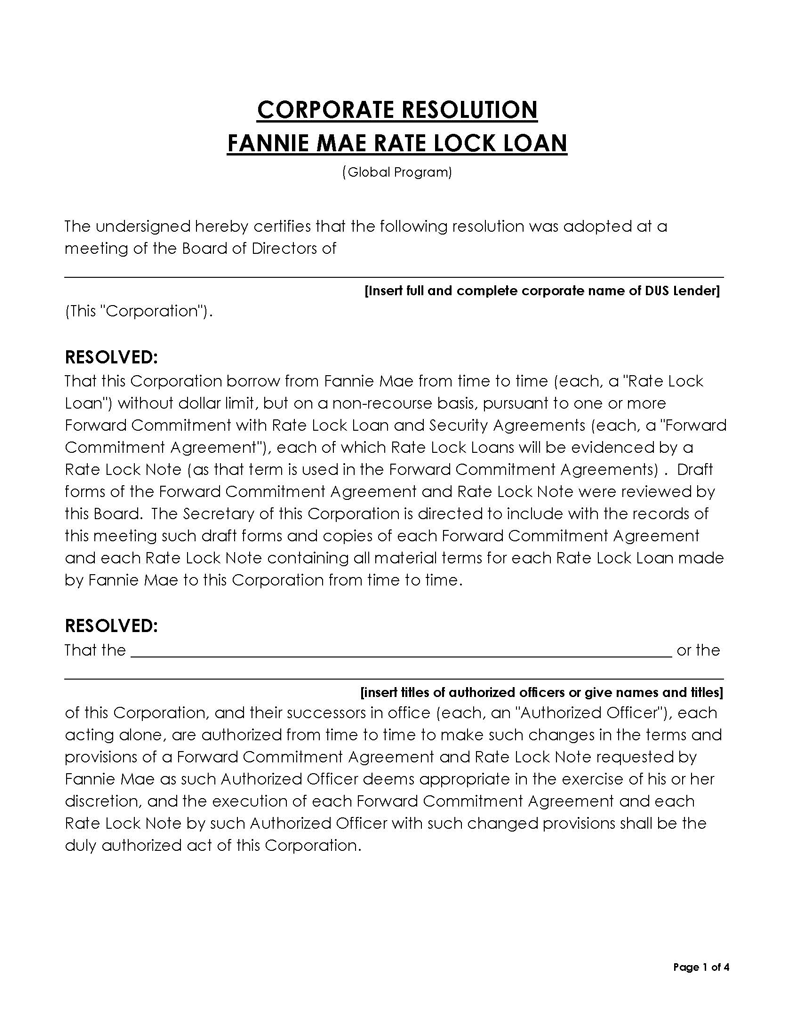
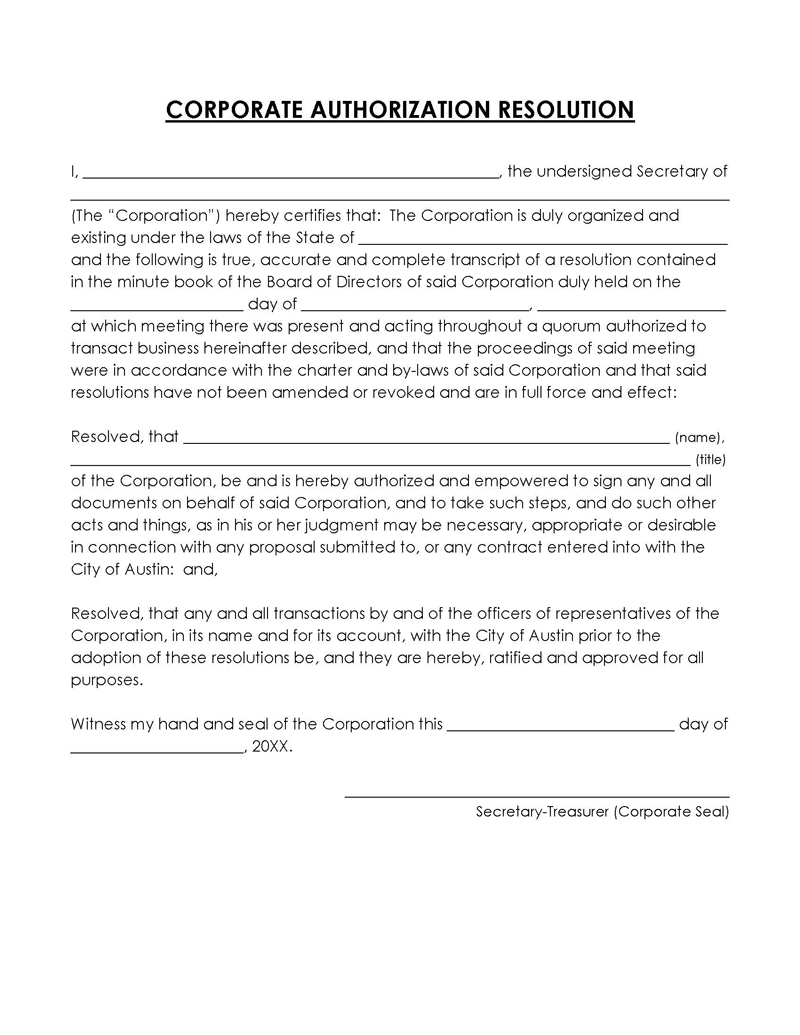
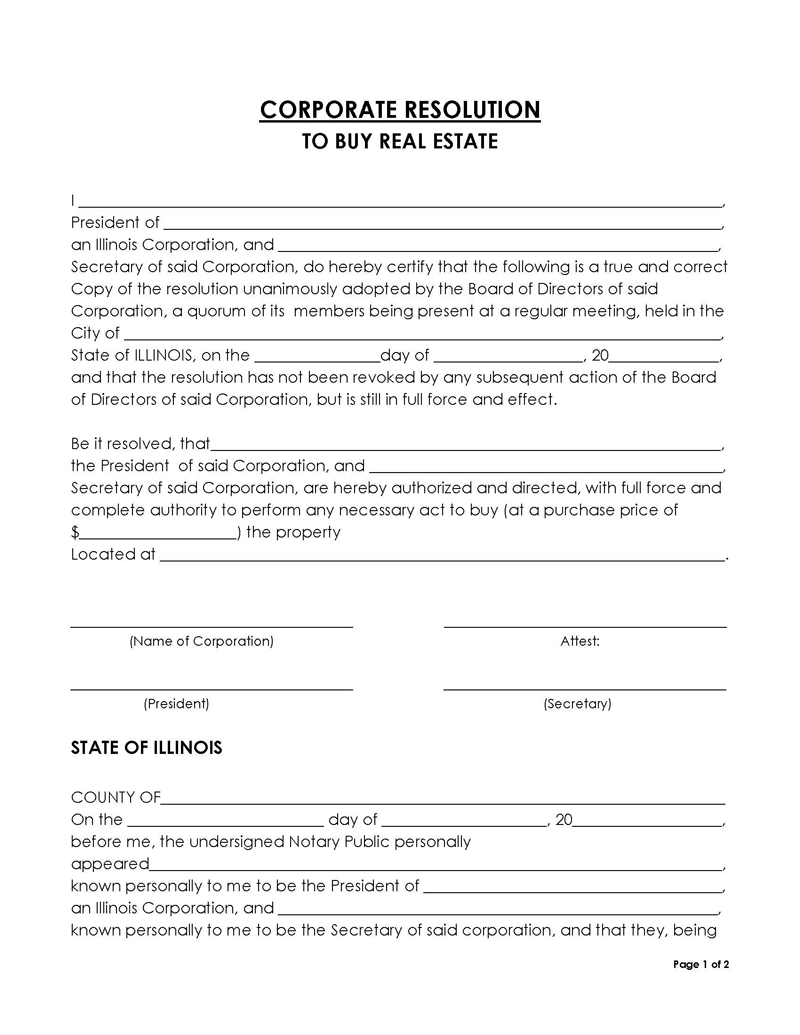
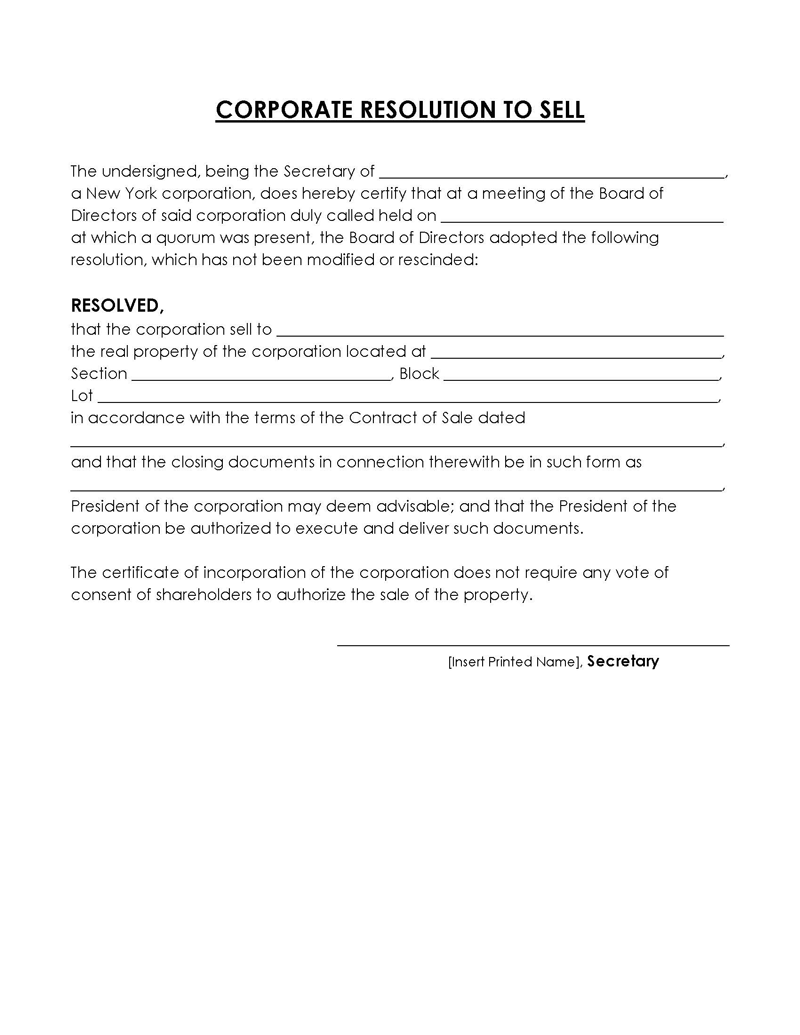
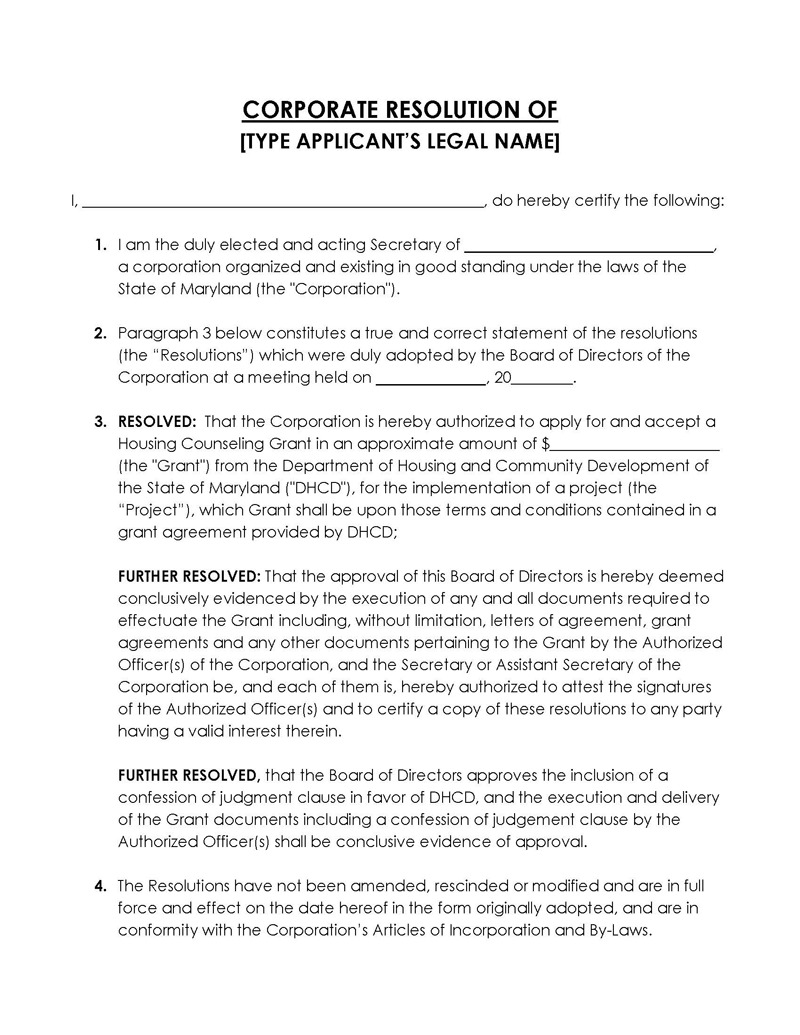
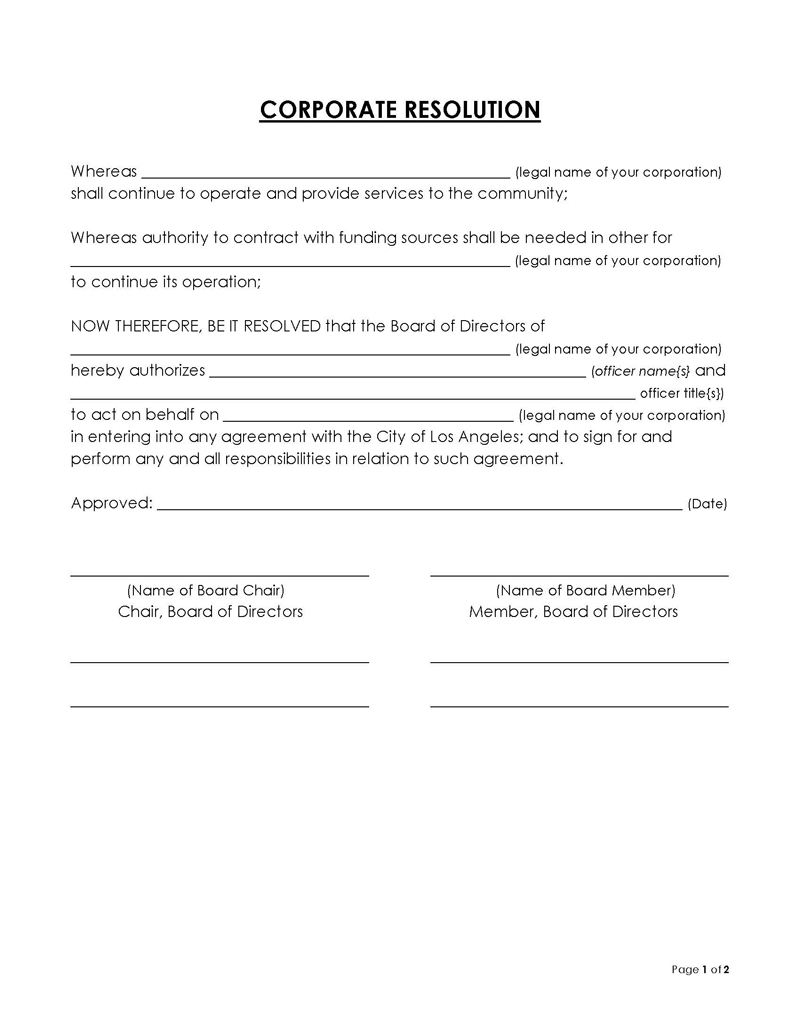
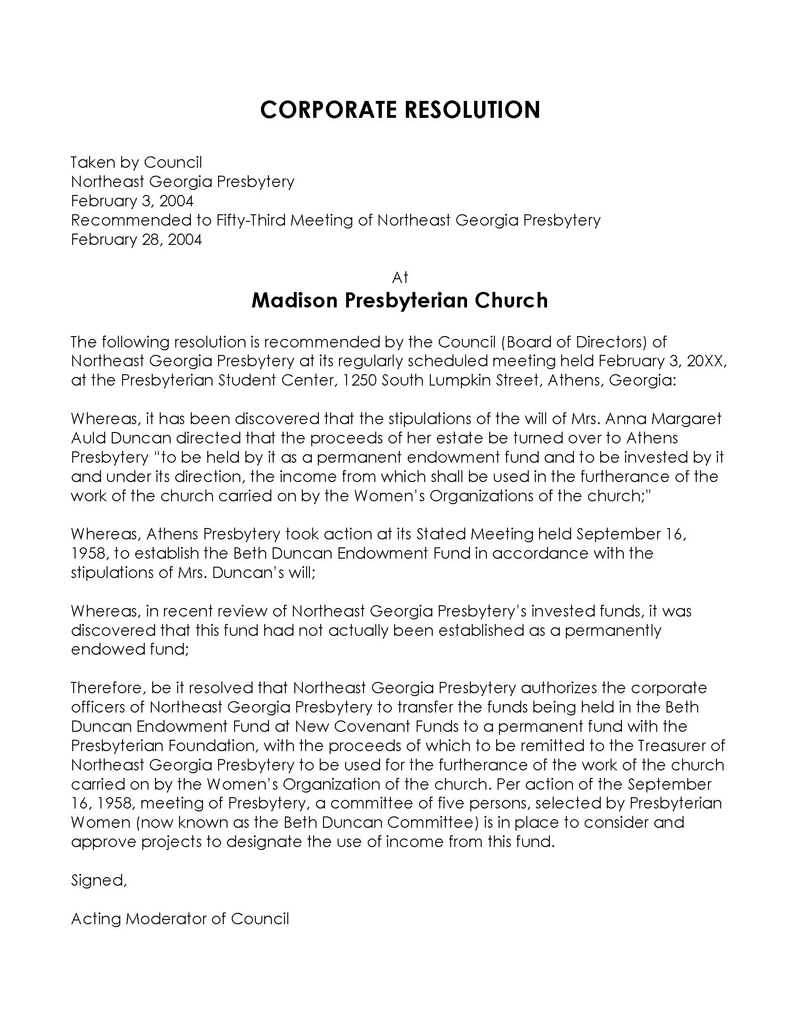
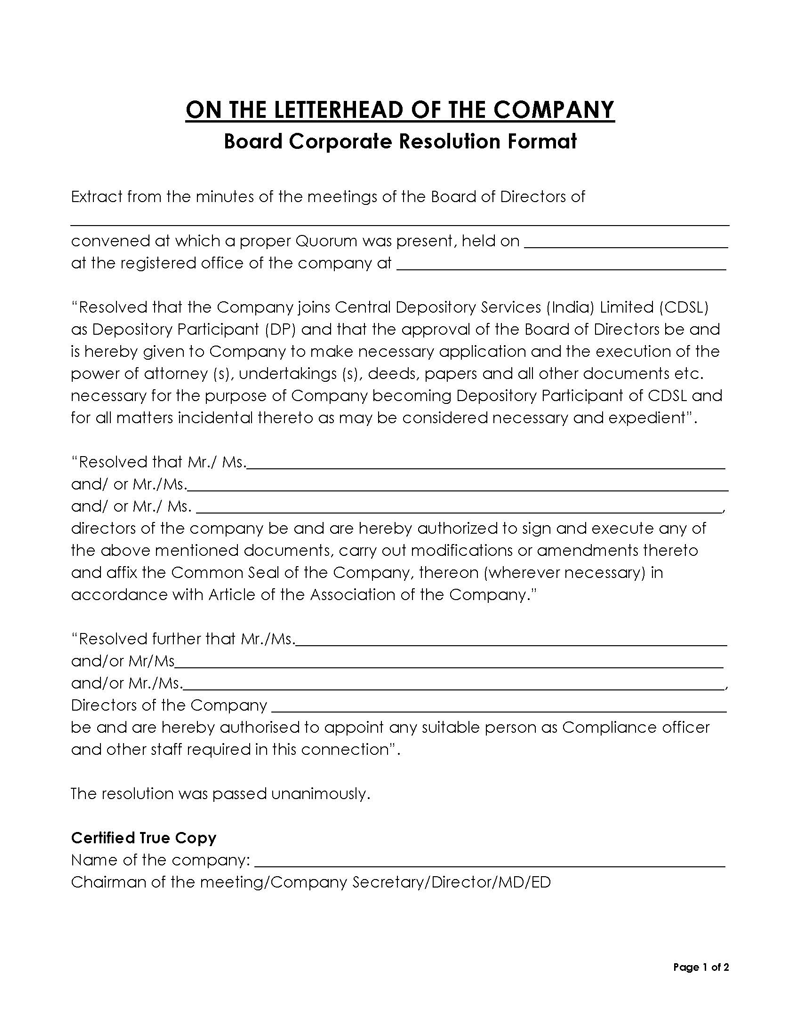
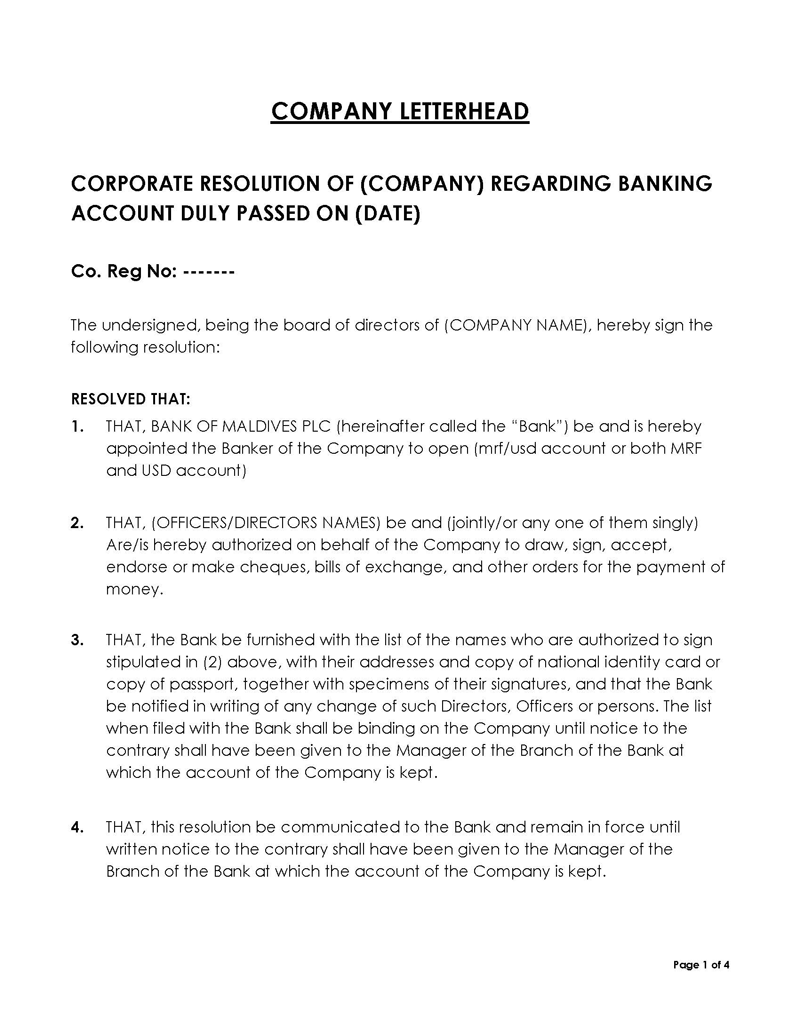
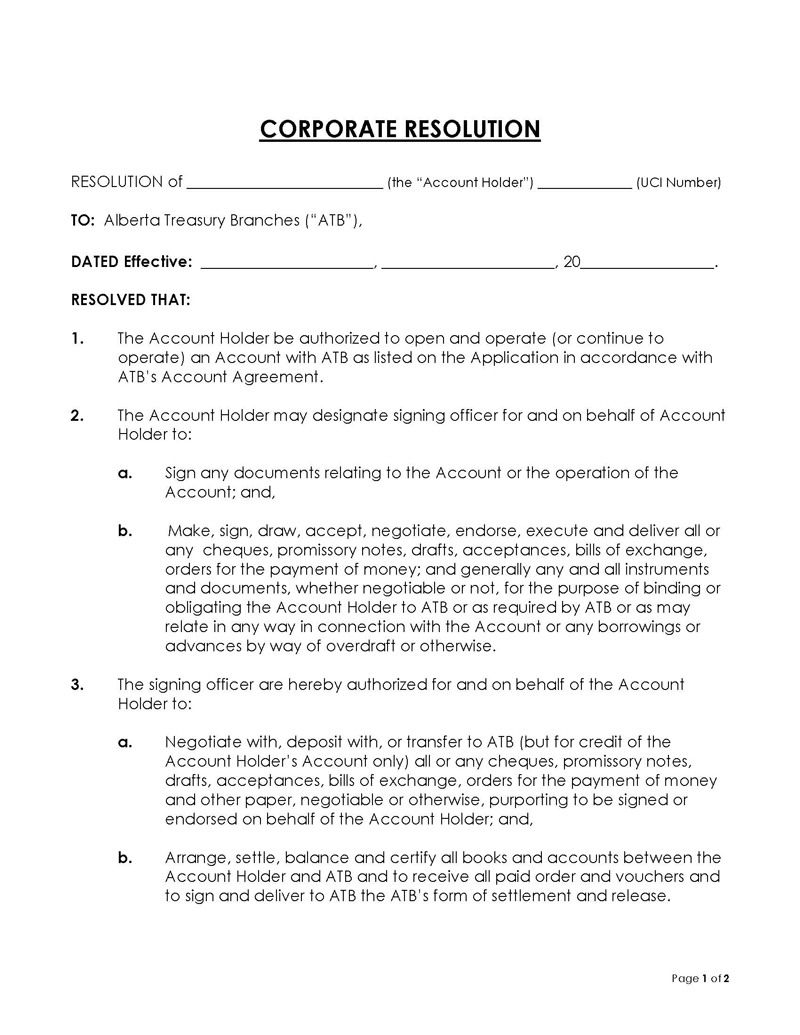
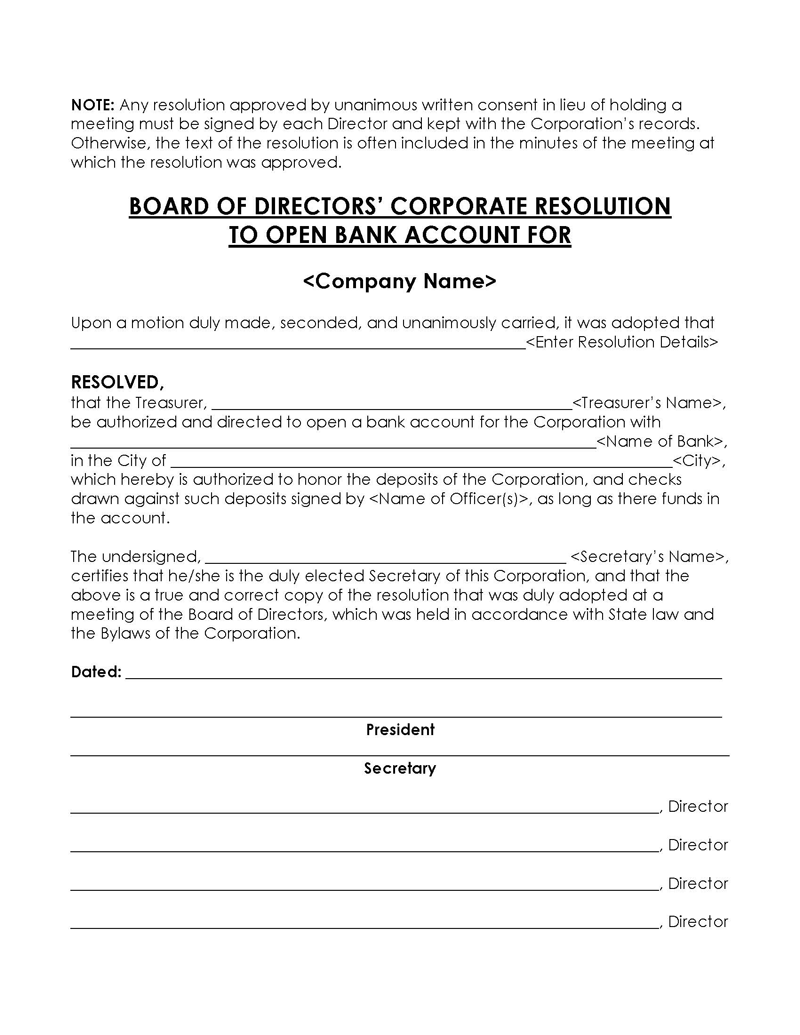
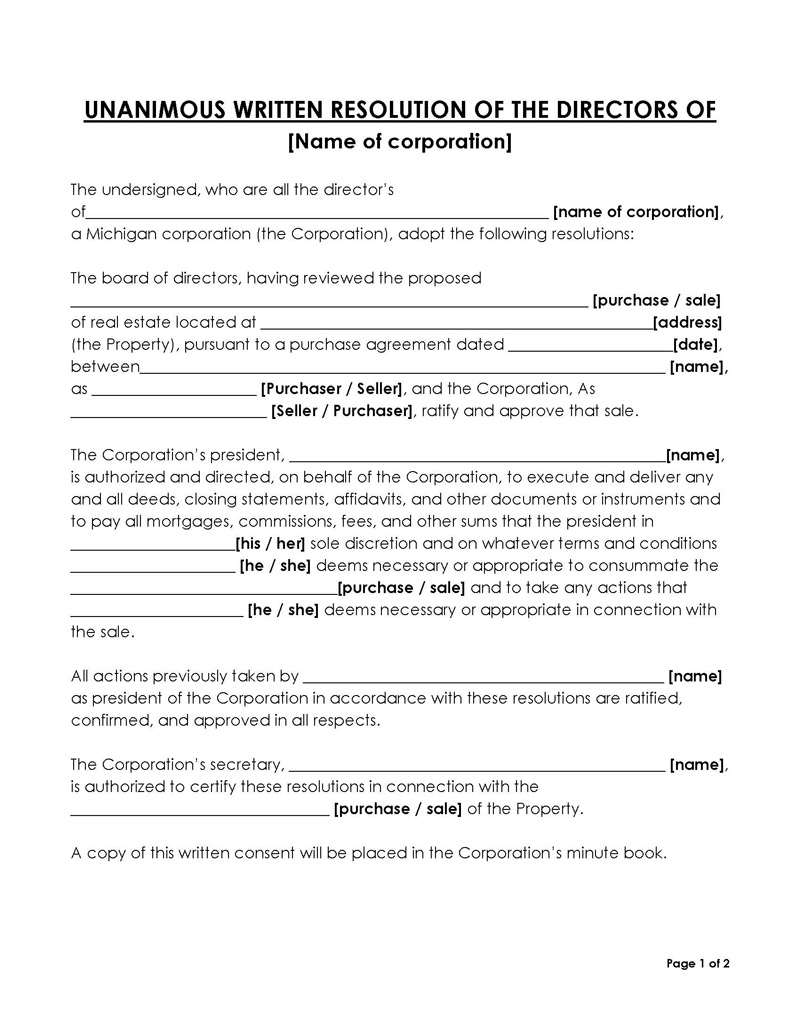
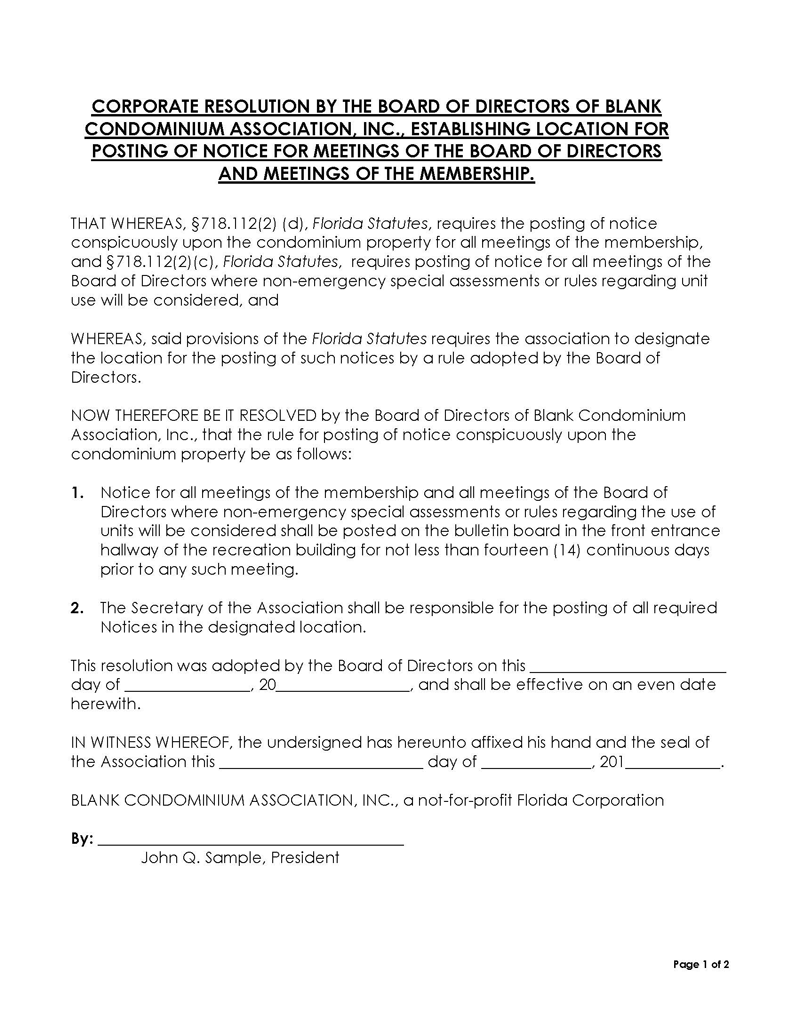
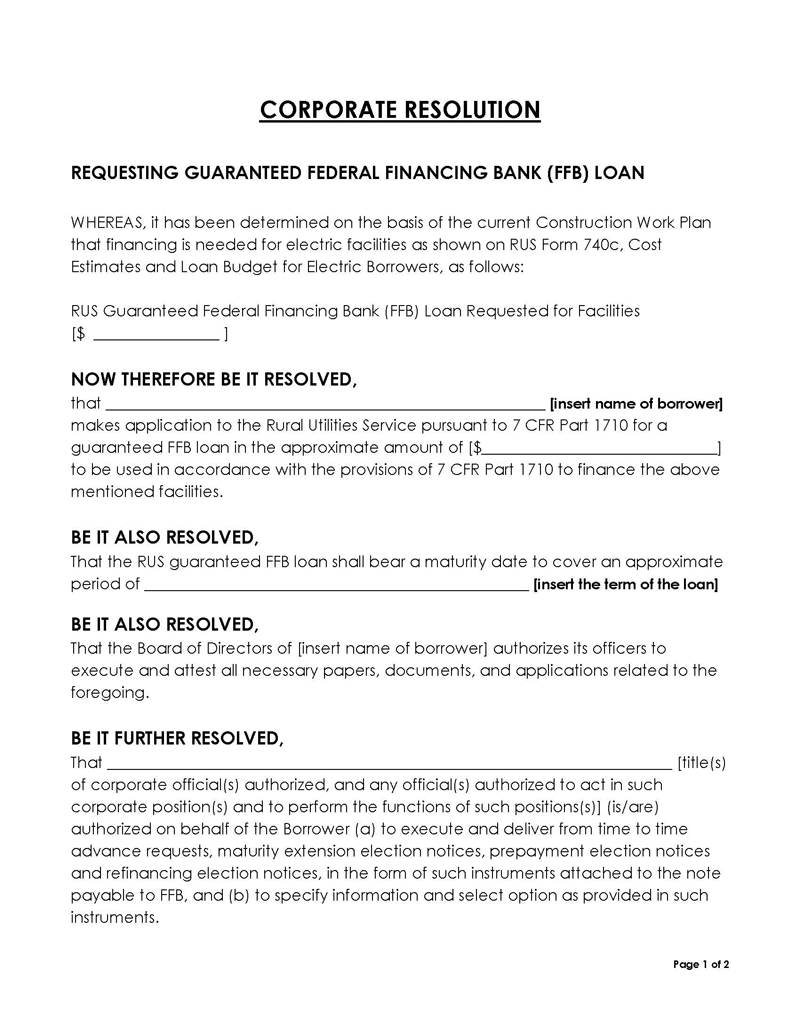
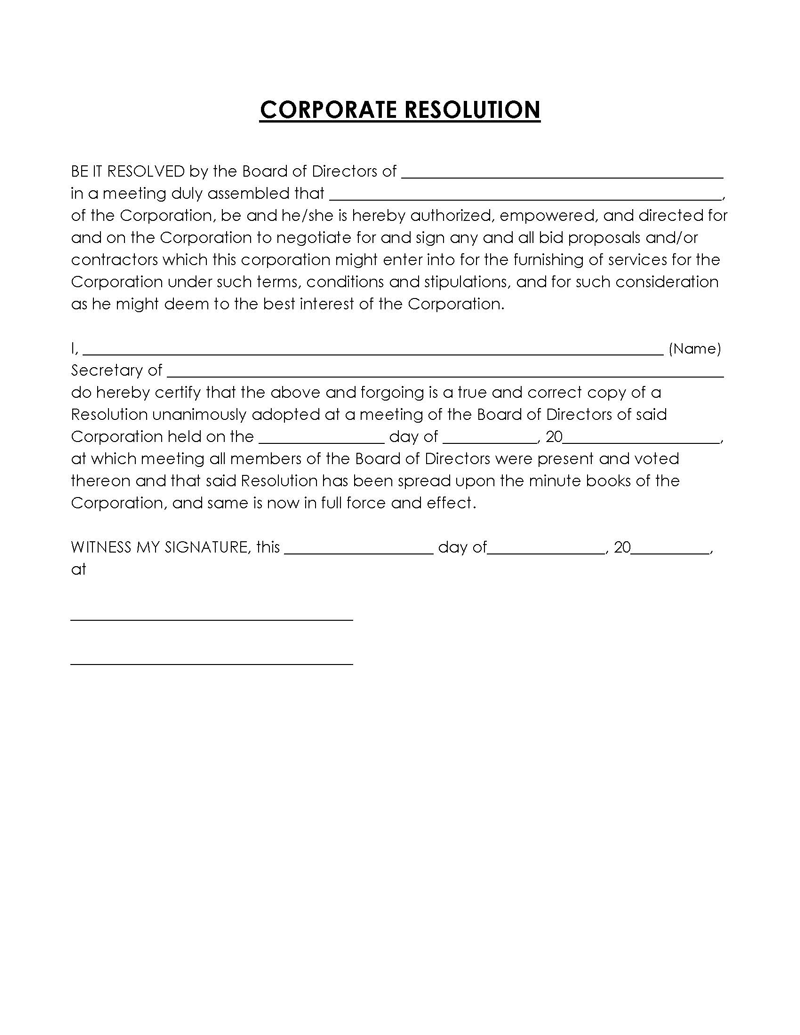
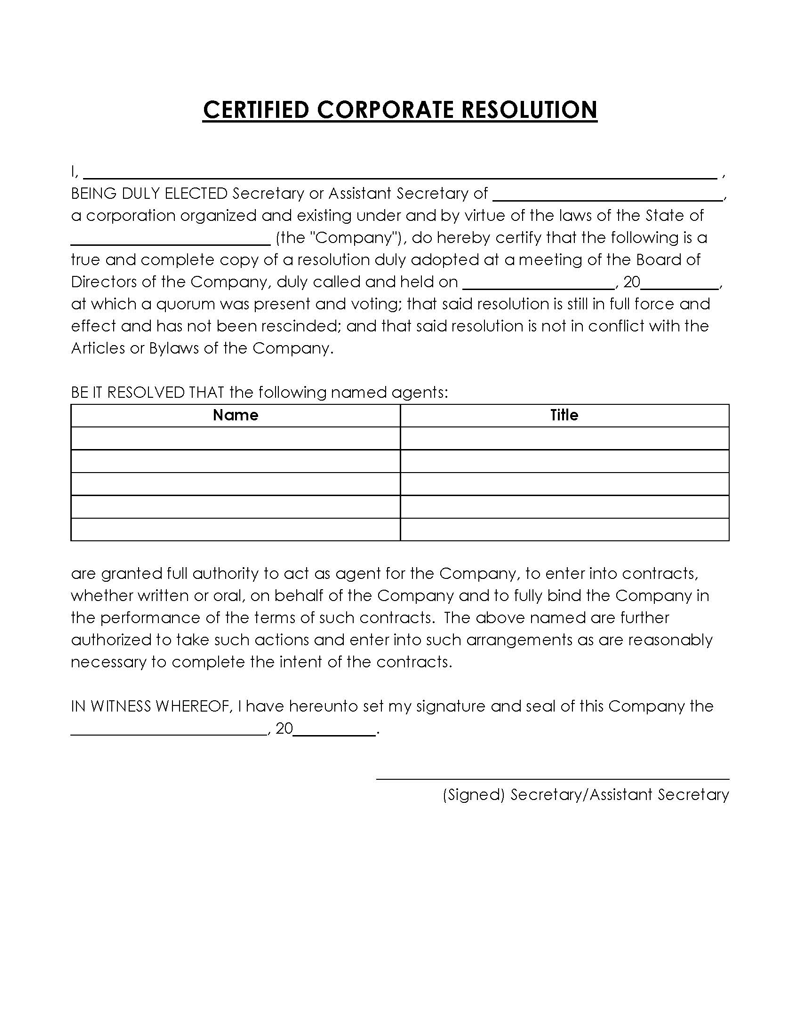
Importance of Corporate Resolution
A form is usually needed to make major decisions during a board or shareholder meeting. These can be things like electing a new board member, establishing new rules, hiring personnel, or even getting a new patent or trademark.
You will also need to use this form for different purposes, such as opening a new bank account for the corporation. At times, you may need to prepare and use this form as a way of complying with state or federal laws. Knowing when to use a form is the first step in understanding how useful it is to use this form to record corporate resolutions.
Corporate resolutions are usually a list of all the decisions that the board members have made during a board meeting. Based on these major decisions, the corporation’s executives are guaranteed that there will be no conflict of interest with the owners, as the board members have been trusted to do what is best for the company. In other words, major decisions become policies and rules that, once made, must be followed if a corporation is to succeed.
According to these resolutions, the board members are in charge of branding the corporation, supporting the corporate executives, and ensuring that the corporation has all of the resources it needs to function optimally. As a result, for a properly functioning organization, all critical decisions made during board meetings must be documented in the form.
Therefore, corporate resolutions are effective in that they make sure board members abide by the company’s bylaws, tax laws, state and federal laws, and other regulations. Knowing how they affect a corporation’s operations will help you understand why you must record your resolutions using a form.
This is because it serves the following purposes:
- Holds the board members accountable based on the laws, rules, and regulations realized from their resolutions.
- Ensures that the board members act according to the fiduciary duty that requires them to act in a way that benefits the company, its owners, and the shareholder.
- Notifies the bank(s) about the type of authority a specific executive has over the corporation’s bank account, for instance, depositing or withdrawing money, opening a new bank account, writing checks, etc.
- Helps the corporation to operate independently from the owners and, in return, protects the owners from liabilities relating to the corporation.
- Regulators such as IRS, corporate officers, and shareholders can review these important decisions using the form prepared by the board members.
Typical Corporate Resolutions
There are different problems that corporations may face in their daily operations. Such issues usually require discussions and decisions to be made. This is where the board of directors will hold a meeting to discuss these decisions and make them corporate resolutions.
Some of the typical corporate resolutions include:
- Appointing the person responsible for making major financial decisions for the corporation
- Making changes to the dividend distribution policy
- Appointing corporate officers who are authorized to trade, assign, transfer, or hedge securities
- Purchasing or selling corporate real estate
- When there is a need to take a loan or credit
- Issuance of debt to get capital for the corporation
- Voting for a new member
- Firing or appointing a member of the executive management team.
- Dealing with executive compensation such as expected bonuses
- When handling mergers and acquisitions or joint ventures
- Making changes in the employees’ health benefits
- Leasing equipment or purchasing major assets like land
- Decisions about establishing a location in a new state or country
- When you require a license or a government approval
- When it is time to approve the annual budget
- Negotiating a contract
- To approve the sale of equity shares
The Process
The process of making a \ form involves several steps. These steps are discussed in detail below:
Step 1: Create a board meeting agenda
The corporate board members must call for a board meeting agenda. The agenda is usually about a problem that needs to be discussed to find a solution. Usually, the agenda is shared earlier with the board members before the meeting. Also, the agenda is meant to include a corporate resolution or a major decision that the board members want to include in the form.
Step 2: Discuss the agenda item for resolution
The next step is for the board members to bring up the resolution and discuss it among themselves. This is done so that an agreement can be reached before it can be included in the document.
Step 3: Vote on the proposed resolutions
The next step is to vote on the resolution to see if the board members have come to a consensus. After tallying the votes, it will be decided if the resolution has been approved.
Step 4: Record meeting minutes
The meeting minutes must then be written to document the resolution that was discussed and the outcome of the vote. If the board members agree on the decision, it will be included in the form of a new corporate resolution.
Items to Include
Creating a form can be difficult and time-consuming. To ensure that your form complies with all legal requirements and is complete, you must include all required information and use the proper format.
However, you can use a template rather than write a form yourself. With a template, you will make the process easier and faster. Also, you can use the template multiple times since you just have to fill in the details of the resolution every time.
When using a form template, ensure that you include the following components:
Title of the document
There must be a title for the template. The title for this document usually refers to the minutes of the meeting when a particular resolution was discussed. Additionally, the title must describe the type of meeting that was held and the attendees. An example would be the Board of Directors’ monthly meeting minutes.
Statement of purpose
The purpose for holding the aforementioned meeting must be stated in the document. This is referred to as a “statement of purpose” and must be stated immediately after the document’s title. Make sure your statement of purpose includes the resolution that will be discussed at the meeting.
Name and primary location of the corporation
Ensure the corporation’s name is also included alongside its primary place of business. You must specify whether the meeting took place at the main office or a different location where the corporation is also registered. This will make it simpler for relevant parties to identify the corporation when reviewing the form.
Date and location of the meeting
Ensure that your form specifies the exact location where the meeting was held to discuss the corporate resolution. This is usually the full address of the location of the meeting. Also, you need to include the date and time when the meeting occurred. Both the meeting’s beginning and end times must be specified.
State and applicable state laws
The state and other applicable laws, such as bylaws, should also be mentioned in this document. These laws should be pertinent to the resolution under discussion since they will serve as a guide to show whether what is being discussed is legal.
The decision that was made
This information is important and must be included in your form. You must state whether the meeting’s participants approved and adopted the resolution. Also, you should include information regarding whether the approval was unanimous or not. If more than one resolution was discussed, be sure to specify which one was chosen in your form.
A sentence expressing the unanimous consent
A sentence indicating board member approval should also be included in the form. It highlights whether the resolution has the agreement of the board of directors. You must specify in writing whether the resolution was approved by a unanimous vote or not. In case the votes were not unanimous, you need to indicate the number of votes that agreed (“yea”) and those that were not in support (“nay”).
A ‘whereas’ statement
A “whereas” statement or statements are required in the document to show the board members’ plans concerning the resolution they discussed and approved.
EXAMPLE
Start the statement with “Whereas it is the intention of this board of directors to…” and then include the resolution they agreed on. This statement is, however, optional.
A “therefore” or “resolved” statement
It should also have a “therefore” or “resolved” statement that indicates the actions that need to be taken.
EXAMPLE
“Therefore, by written unanimous consent….”
Frequently Asked Questions
A banking resolution is a decision made by the board members to authorize certain banking-related activities for the corporation. This may include signing checks, borrowing money, or even opening a bank account. This decision is usually made at the very first meeting of the corporation’s board of directors.
Unlike corporations, LLCs are not required to have corporate resolutions. Therefore, the decisions made during an LLC meeting do not require much validation. However, in cases such as making major financial decisions, it is important to create an LLC resolution.
The Articles of Incorporation are not the same as the corporate resolution. The Articles of Incorporation document is meant to provide details about the existence of a corporation. On the other hand, corporate resolutions are the decisions made by board members after discussions have been held during a board meeting.
After a corporate resolution is written and signed, the corporation’s secretary must include it in the corporate resolution form, as it will be needed for future reference. The corporate resolution form should follow a set format for it to be accepted by major institutions like regulatory agencies and banks.
Shareholder resolutions are non-binding decisions made by the corporation’s shareholders during an annual meeting. They are usually suggestions from activist groups meant to persuade the shareholders’ board to make changes in terms of environmental, social, ethical, or human rights issues. This process is regulated by the Securities and Exchange Commission (SEC), especially if the stock is held by the public. Since they are non-binding, the corporation has no obligation to accept them.




